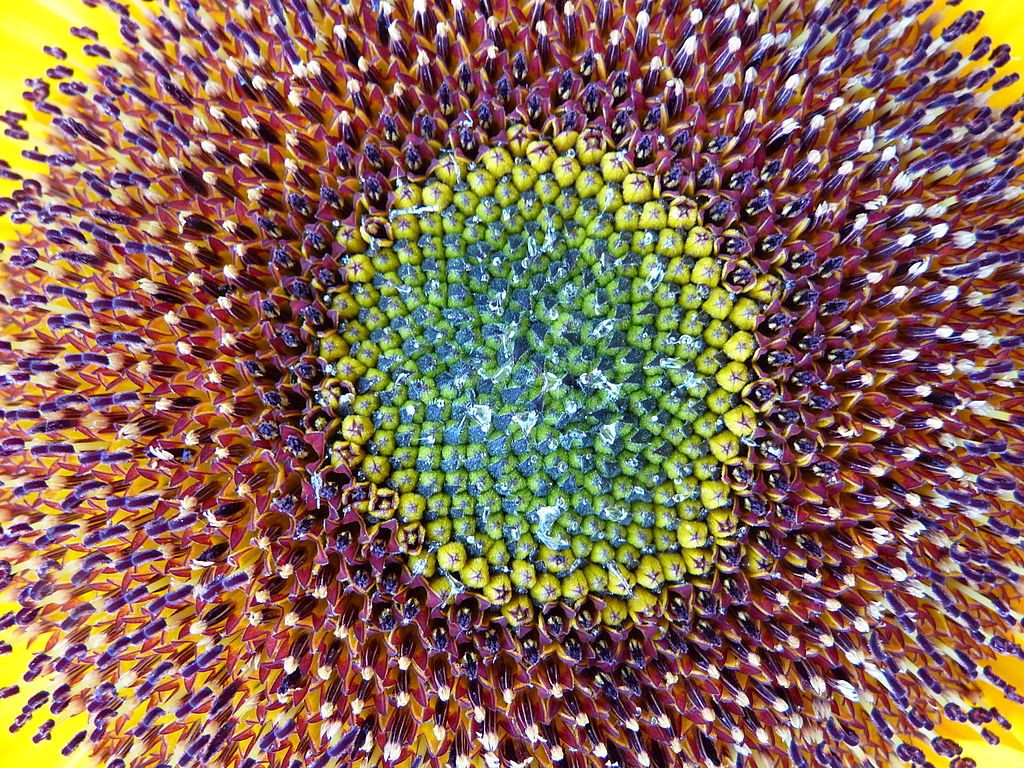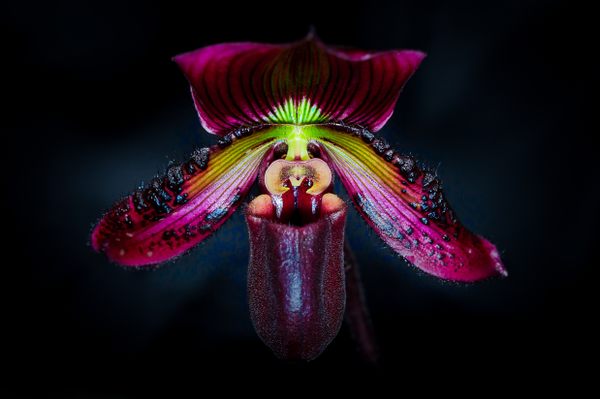The Lazarus Plants: Why 3 Million Seeds Are Being Sent to Cold Storage for 50 Years

The seeds of a sunflower (Image: 3268zauber/WikiCommons CC BY-SA 3.0)
Not so long ago, the seeds bagged and stuffed into the fridge of Steven Franks’ lab were starting their lives in a field or a meadow or on the side of the road, somewhere along the East Coast. Now they are destined for a seed bank in Colorado, where they may be taking a very long nap, of 10, 20, even 50 years.
Then, warmed up, planted in a bit of soil, they will be brought back to life. They will be raised alongside their descendants, the exact same species of plants, collected from the same exact same spots where these started their lives. Only, most likely, those descendants will be different in some way. Having survived for years out in the world, with the climate changing, they will have evolved in response.
And by growing the old plants and the new plants in the same lab conditions, at the same time, future scientists will be able to say exactly how. It’s the first seed collection specifically designed to measure evolution over time.
This is called “the resurrection approach.” But up until now, biologists have only rarely been able to use it to study natural populations, when they chanced upon a cache of stored seeds. Franks and his collaborators are trying to change that. The seeds in the fridge are part of Project Baseline, which aims to collect millions of seeds from dozens of species, at sites across the country, so that anywhere from 5 or 50 years from now, scientists can bring them back to life. By growing these “ancestor” plants side by side with their descendents, future scientists will be able to measure how the genetic makeup of this population of plants has changed over time—they will be able to see evolution in action.
“People generally, if they believe in evolution at all, think it takes a really long time,” say Franks, a Fordham University associate professor of biological sciences, who has a special interest in Brassica rapa, the wild mustard that humans have transformed into rapini, kohlrabi and bok choy. ”It’s only recently, even within the scientific field, that it’s been widely recognized that evolution can happen fast and that you can study it as it occurs.” He and his colleagues expect, Franks says, that even five or 10 years into the future they’ll be able to find evidence of evolution in the plants that they’re studying. The climate is changing so fast that the plant left out in the wild will be straining to survive.
The team is collecting seeds from 20 different populations of more than 30 species of plants. Already, in the first four years of the project, they’ve collected about 3 million.
“The most exciting thing is that we’re laying the groundwork with a project with a 50 year time horizon,” says Julie Etterson, Project Baseline’s principal investigator, an associate professor at University of Minnesota Duluth. “Basically, after I’m already dead, people will be using this.”

Echinacea purpea (Photo: Diego Delso/WikiCommons CC BY-SA 3.0)
Those future scientists, though, need to be able to collect samples from those same populations, decades in the future. And so picking Project Baseline sites meant imagining what places might be relatively unchanged half a century from now. The plants in the collection are common and often studied, and they’re relatively easy to find. But while the vegetal abundance of an abandoned lot might provide a population today, 50 years from now, any trace of plant life may have been erased.
The places that will still be growing plants in half a century, the team decided, are the ones that are protected today—national forests, grasslands and parks, state and private preserves, and the biological research stations of universities. Project Baseline sites are located across the country, with Etterson overseeing collection in the Midwest and a third collaborator, Susan Mazer, covering California and other Western states.
To actually collect the seeds, though, the team has to catch the plants at exactly the right time. On a Wednesday afternoon in July, two of the project’s members, Jimmy Goehl, a recent Fordham graduate, and Emily Kottler, a rising senior at Vassar, made a quick trip to Mianus River Gorge, about an hour north of New York City. They were on what amounted to a reconnaissance mission, scoping out their subjects. How many had gathered in this field? How close were they to flowering?
The field was a short walk from the road, through a band of woods damp enough to grow substantial, spongy-looking mushrooms and cool with the thick green of mid-summer. In the open, the heat of the sun hit hard, and the plants grew thick enough to make the ground springy. Butterflies gathered round bright orange bundles of flowers, and an insectile hum filled the air.
To an untrained eye, this was a pleasant mish-mash of low and knee-high plants; Goehl and Kottler saw, immediately, that the field was full of dogbane, Apocynum cannabinum. Tall, with its darker eye-shaped leaves and its brazen red stems, it’s an easy plant to identify. Also, it was everywhere.
Dogbane blooms late in the summer, though, and only a few plants were starting to show buds. There were plenty of black-eyed susans, too, but they were still showing their pretty flowers, not yet ready to be collected. By the creek, they found impatiens hiding among the wide leaves of skunk cabbage.
A population of plants needs to contain 100 to 200 individuals, each of which gives up dozens of seeds to project. Goehl pointed out a section of the field where last summer, he had seen geraniums. This year, they had missed them. ”Once they start seeding, they’re very fragile,” he says. “You can miss them really easily.”
This year, the harsh winter threw some plants, like the geraniums, into a panic. They had bloomed late, and then lasted only a couple of days. Seeds grown in response to these sort of variable conditions might have been of use to future scientists. But the project’s collectors have to catch them first. Those geranium seeds had escaped their chance to time-travel into the future.

Dogbane (Photo: Siddharth Mallya/WikiCommons CC BY-SA 3.0)
No Project Baseline site, though, is free from human intervention. Many of the plants grow on disturbed sites, like fields that were once cleared of trees for crops or houses. At Mianus River Gorge, the protected areas border big houses with sprawling lawns, and one of the other collection sites is squinched between a small creek and a road. But even in more isolated sites, the plants that live there must deal with the massive change that humans have made to their environment, by amping up average global temperatures.
As the climate changes, biologists have been looking to see if the animals and plants that live in places that are becoming hotter or drier have evolved in response. But though they’ve seen outward changes in plants or animals that look like they could be connected to climate change, it’s been difficult to prove whether those changes are encoded in the genetic makeup of the population—whether, as a group, a species is truly adapting in response to these challenge circumstances.
About a decade ago, though, Franks and a couple of colleagues were able to show genetic evidence of evolution in response to a climatic change.
In 2004, Franks was working on a post-doc in California when his boss, Art Weis, proposed an experiment. In 1997, the lab had collected and stored some Brassica rapa seeds. The years just before 1997 had been usually wet, but by 2004, the same area had been suffering through a series of drought years. Because they, by chance, had those old seeds, they could test whether the population had undergone evolutionary change. After they grew the old seeds and new seeds collected from the same area, they were able to show that, on a population level, the change in the climate was associated with a change in the plants’ flowering time—they had adapted, just a little bit, to the adverse conditions.

A black-eyed susan (Photo: Josh/Flickr)
This is type of study that Project Baseline’s creators imagine that their collection will be used for in the future. Twenty years from now, someone will be able to grow a population of Brassica rapa and see which traits climate change might have selected for. The collection include plants with different life histories (annual or perennial), and some are herbaceous, while others are shrubs. They’ll all be dealing with the same major problem, and by comparing plants that have been struggling with climate changes for years to the plants growing now, scientists will be able to see how the plants have changed as a result.
“They might respond to the same selection pressure in the same way, or they might respond in very different ways. That’s what we want to know,” says Franks.
Some plants, for instance, may adapt faster than others. Some may flower early. They may developed different solutions to the same problems. That’s what these millions of seeds will allow us to better understand—what, exactly, adaptation looks like in real time. Not matter what, though, it’s unlikely that it’ll be enough to save these plants over the long term. Even when evolution works fast, the climate is changing faster.
































Follow us on Twitter to get the latest on the world's hidden wonders.
Like us on Facebook to get the latest on the world's hidden wonders.
Follow us on Twitter Like us on Facebook